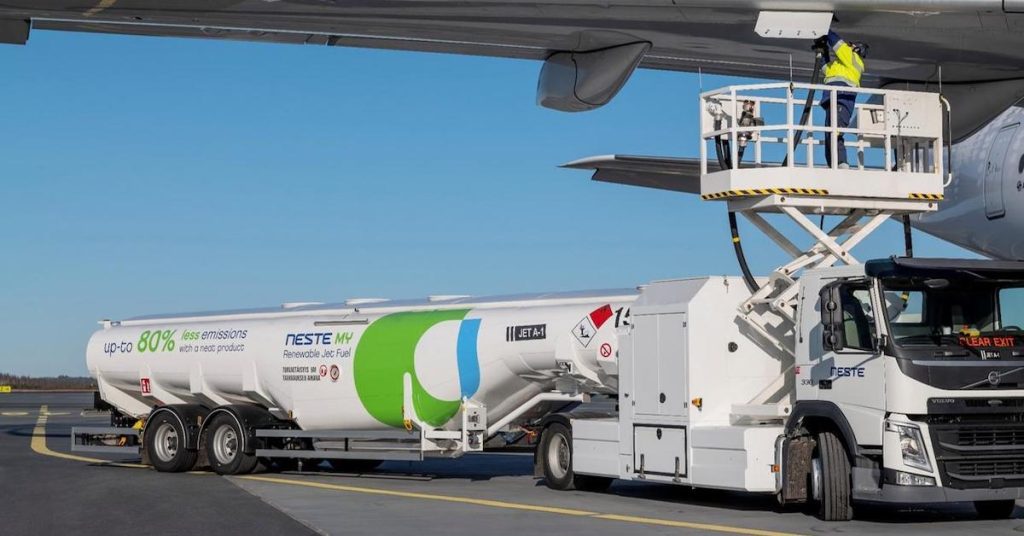In recent discussions, the European Commission has come under scrutiny concerning its mandate for sustainable aviation fuel (SAF). The initiative requires airlines to utilise 6% SAF by 2030.
While the Commission is confident about reaching this target, airline executives express concerns over the lack of incentives and infrastructure to support SAF production in Europe.
Objectives of the SAF Mandate
The European Commission’s SAF mandate is an ambitious goal aimed at reducing carbon emissions within the aviation sector. The plan obliges airlines to ensure that 6% of their fuel comes from sustainable sources by 2030. The Commission believes that this target is both achievable and essential for environmental progress, despite current production levels being insufficient and heavily US-centric.
Challenges Facing the Airline Industry
Industry leaders, including IAG chief executive Luis Gallego, highlight the significant challenges posed by the mandate. Gallego emphasises the difficulty of reaching the 6% target when the majority of SAF investments occur outside of Europe, noting the absence of new SAF plants in the region.
Jet2’s Steve Heapy echoes these sentiments, acknowledging the airline’s commitment to sustainability but pointing out the dependency on external parties to produce SAF, a product not feasible to be manufactured in-house.
Demand and Supply Inadequacies
The aviation sector is experiencing a supply-demand mismatch, with demand for SAF soaring far beyond the available supply.
Jet2 and other airlines are poised to buy SAF whenever available, yet the existing production does not suffice to meet these demands, largely due to the high production costs compared to traditional fuels.
Moreover, the cost of SAF remains significantly higher, nearly five times that of conventional aviation fuel, further complicating widespread adoption across the industry.
The Role of Incentives
Incentives are pivotal to expanding SAF production in Europe. Irish Transport and Environment Minister Jack Chambers acknowledges the necessity for increased incentives, as Europe trails behind its targets.
Ryanair’s Michael O’Leary advocates for using aviation tax and emissions trading revenues to subsidise SAF production, urging the European Union to ringfence these funds for such purposes.
EasyJet’s Johan Lundgren concurs, suggesting that environmental taxes could be redirected as incentives to boost SAF availability.
International Collaborations and Solutions
The push for global solutions is growing as airlines call for international cooperation to address SAF supply shortages.
Lufthansa Group’s Carsten Spohr stresses the need for a coherent, global strategy as only 0.2% of aviation fuel currently used is SAF.
The disparity between the geographical focus of SAF developments, mainly in the US, and the mandates set in Europe poses an additional hurdle that must be addressed collectively.
Future Prospects for SAF in Europe
The European Commission promises to complement the ‘stick’ of penalties with the ‘carrot’ of future incentives. Commissioner Rachel Smit mentions the Commission’s plan to introduce supportive measures.
These measures aim to facilitate compliance with the SAF targets without placing undue burden on airlines struggling to source the necessary sustainable feedstocks.
By providing a balanced approach of incentives alongside penalties, the European Commission seeks to foster a more favourable environment for SAF production within Europe.
Conclusion
The European Commission’s SAF mandate, while contentious, is a step towards sustainable aviation. Balancing incentives and penalties is crucial for fostering SAF production in Europe, thus addressing airlines’ concerns.
With strategic adjustments and enhanced collaboration, the aviation industry can work towards the common goal of reducing carbon emissions through increased SAF use.
The implementation of the SAF mandate represents a significant challenge but also an opportunity for innovation within the aviation industry. Success hinges on effective collaboration and supportive policies.

